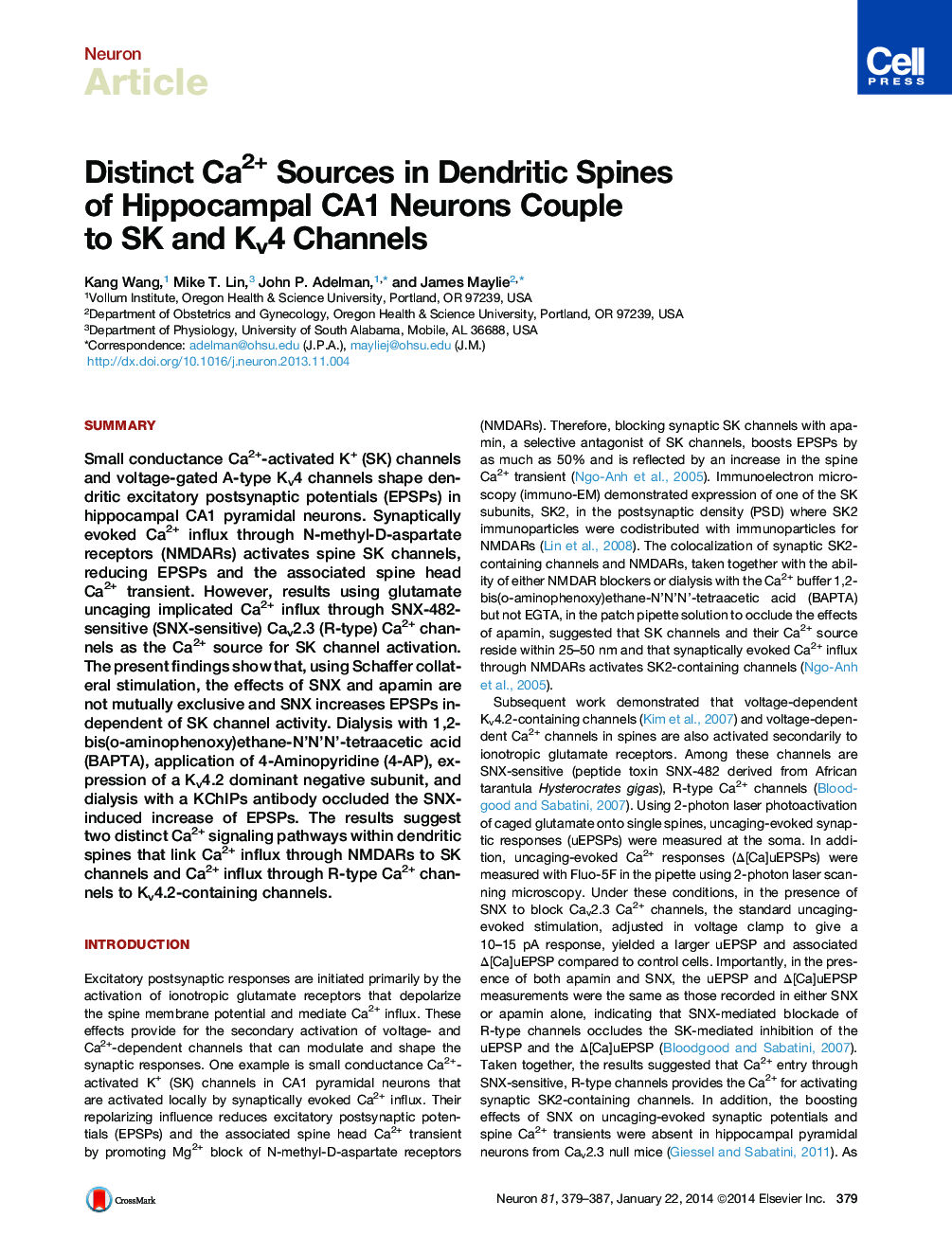| Article ID | Journal | Published Year | Pages | File Type |
|---|---|---|---|---|
| 4321201 | Neuron | 2014 | 9 Pages |
•Blocking R-type Ca2+ channels with SNX or Ni2+ increase synaptically evoked EPSPs•Synaptic activation of SK channels is not coupled to R-type Ca2+ channel activation•Kv4 channel activation is coupled to synaptic activation of R-type Ca2+ channels•Distinct Ca2+ sources in hippocampal spines couple to SK and Kv4 channels
SummarySmall conductance Ca2+-activated K+ (SK) channels and voltage-gated A-type Kv4 channels shape dendritic excitatory postsynaptic potentials (EPSPs) in hippocampal CA1 pyramidal neurons. Synaptically evoked Ca2+ influx through N-methyl-D-aspartate receptors (NMDARs) activates spine SK channels, reducing EPSPs and the associated spine head Ca2+ transient. However, results using glutamate uncaging implicated Ca2+ influx through SNX-482-sensitive (SNX-sensitive) Cav2.3 (R-type) Ca2+ channels as the Ca2+ source for SK channel activation. The present findings show that, using Schaffer collateral stimulation, the effects of SNX and apamin are not mutually exclusive and SNX increases EPSPs independent of SK channel activity. Dialysis with 1,2-bis(o-aminophenoxy)ethane-N’N’N’-tetraacetic acid (BAPTA), application of 4-Aminopyridine (4-AP), expression of a Kv4.2 dominant negative subunit, and dialysis with a KChIPs antibody occluded the SNX-induced increase of EPSPs. The results suggest two distinct Ca2+ signaling pathways within dendritic spines that link Ca2+ influx through NMDARs to SK channels and Ca2+ influx through R-type Ca2+ channels to Kv4.2-containing channels.
